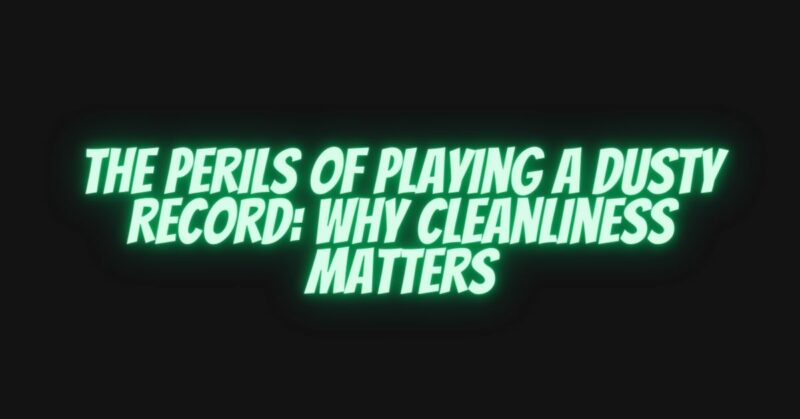Vinyl records are not just a medium for music; they are artifacts of audio history and analog nostalgia. Playing a vinyl record offers a unique listening experience, but maintaining the condition of your records is crucial to preserving their audio quality and longevity. In this article, we will explore the potential downsides of playing a dusty record and why keeping your vinyl collection clean is essential.
The Dust Dilemma
Dust and dirt are omnipresent enemies of vinyl records. They can find their way onto the surface of your records in various ways, such as through improper storage, handling, or simply from the environment. When a record becomes dusty, it can lead to several issues:
- Audio Quality: Dust and debris can cause pops, crackles, and background noise during playback. These unwanted sounds detract from the listening experience and can obscure the music’s details and nuances.
- Needle and Record Wear: Dust particles can be abrasive. When a stylus (needle) comes into contact with a dusty surface, it can grind these particles into the grooves, leading to premature wear and damage to both the stylus and the record itself.
- Tracking Problems: A dusty record can cause tracking problems, where the stylus struggles to follow the grooves correctly. This can result in skipping, mistracking, and even damage to the record’s surface.
- Degraded Sound Quality: Over time, accumulated dust can settle deep within the grooves, making it increasingly difficult to remove. This can lead to a gradual deterioration of sound quality, even after cleaning.
- Record Warping: Dust and debris can exacerbate the warping of records. A warped record not only affects playback but can also lead to increased stylus wear and tracking issues.
The Importance of Proper Cleaning
To mitigate the negative effects of dust on your vinyl records and ensure a quality listening experience, it’s crucial to implement proper cleaning and maintenance practices:
- Regular Cleaning: Make a habit of cleaning your records before each playback. Use a carbon fiber brush or an antistatic brush to remove surface dust. This simple step can significantly reduce pops and crackles.
- Deep Cleaning: Periodically, consider deep cleaning your records using a specialized record cleaning machine or a manual cleaning kit. This process helps remove embedded dirt and grime from the grooves.
- Storage: Store your records in dust-free and cool environments, preferably in protective inner and outer sleeves. Avoid direct sunlight and extreme temperature fluctuations.
- Handle with Care: Always handle your records with clean hands, and avoid touching the playing surface whenever possible. Hold them by the edges or use a record clamp if necessary.
- Stylus Maintenance: Regularly clean and inspect your turntable’s stylus to ensure it remains in good condition. A damaged or worn stylus can exacerbate tracking problems and damage your records.
Conclusion
Playing a dusty record may not result in immediate harm, but it can lead to a diminished listening experience and contribute to long-term wear and tear on both the record and your stylus. To truly appreciate the magic of vinyl records and preserve their sonic integrity, maintaining a clean and dust-free collection is paramount. By adopting proper cleaning and handling practices, you can ensure that your vinyl records continue to deliver the warm, analog sound that has captivated audiophiles for generations.


